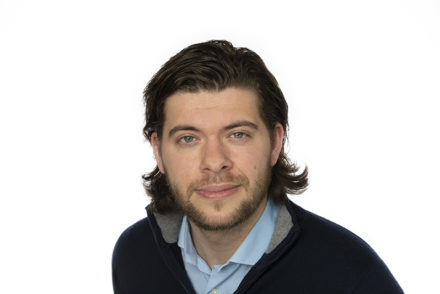David and Goliath in the Amazon
Indigenous communities are vulnerable to land grabbing and dispossession, even if the law is on their side. Bas Rombouts, assistant professor at Tilburg Law School, is an expert on the topic. “Indigenous communities are among the most vulnerable groups in the world.”
The construction of the Dakota pipeline in the United States, oil drilling in Ecuador and Brazil’s mining plans in the Amazon rainforest are just a few examples of controversial projects that have a serious impact on indigenous communities. “In some cases, the very survival of those communities is at stake”, says Bas Rombouts, who recently published his 47-page-long study on the evolution and application of indigenous land rights in the Stanford Journal of International Law – one of the oldest and most reputable international law journals in the world.
Rombouts’ study describes the long struggle for recognition fought by indigenous peoples across the world, and the difficulty of settling land disputes between worlds that could not be further apart. In recent human rights law, some important steps forward have been taken. The rights of indigenous peoples, such as the right to be included in discussions on land use, have been enshrined in international laws and declarations. But when a small Indian tribe sits down at the negotiating table with a multinational corporation, can you ensure fair negotiations?
According to Bas Rombouts, indigenous communities remain extremely vulnerable, despite the existence of laws and treaties. Univers talked to him about the struggle for the world’s ever more scarce natural resources, the limitations of international law, and indigenous tribes spreading from the Sarayaku territory in the Amazon region of Ecuador to nomadic reindeer herders in Sweden.
“The difficulty with international laws is that there is no international police to enforce them”
The rights of indigenous peoples have been the focus of your research since the early beginnings of your academic journey. How did you initially become interested in this particular field?
“I’ve always had an interest in human rights and cultural diversity. During my Master’s in International Law at Tilburg University, I had the chance to study in Sweden. At the University of Uppsala, I followed guest lectures on the Saami. The Saami are nomadic reindeer herders in Sweden, and the last recognized indigenous people of Europe. I thought the Saami and their rights were such an interesting topic. You see, international law and human rights are primarily concerned with states and individuals. But some groups don’t fall into either of those categories, which leaves them vulnerable. I decided to write my Master’s thesis on indigenous rights, which eventually led to a PhD and a job as a teacher and researcher at Tilburg University.”
It’s been ten years since you took those lectures in Sweden. Has the human rights situation of indigenous peoples improved since then?
“In international law, there is a growing realization that indigenous communities need to take part in discussions that affect them. Indigenous consultation and participation rights have been incorporated in international agreements. And over the past 10 to 20 years, we’ve seen countries pass national legislation on the protection of indigenous rights as well, especially in Latin-America. But indigenous communities continue to be disproportionally affected by exclusion from decision-making processes. It often still goes wrong. Especially for smaller tribes, the situation remains very precarious.”
[caption id=”attachment_107681″ align=”aligncenter” width=”100%”> A Saami family, around 1900
If the rights of indigenous communities are enshrined in international laws and agreements, why do violations of those rights continue to take place?
“The difficulty with international laws is that there is no international police to enforce them. In the Netherlands, stealing a bike is against the law. So if I steal a bike and the police arrives, I’ll be given a fine for breaking the law. In international law, it’s much more complicated than that. Whether agreements are enforced or not largely depends on power politics and political will on the part of states. That’s why it’s so important that states pass national legislation on the protection of indigenous rights. Another difficulty is that there are different types of agreements. They are not all binding. One of the most important documents, the UN Declaration of the Rights of Indigenous Peoples, is not a law. It’s a declaration, it doesn’t have binding effect. It’s very difficult to enforce the standards outlined in that declaration, even though almost all countries of the world have endorsed it.”
“Disputes over indigenous lands are often disputes between two completely different worlds”
You write that, for indigenous peoples, the land is not just important for material reasons. They often have a deep spiritual connection to their traditional lands. Does that complicate disputes over land between native communities and large companies or governments?
“Absolutely. Disputes over indigenous lands are often disputes between two completely different worlds. We have a very Eurocentric idea of property and ownership. In our world, you can sell your house; after you sign a contract, the house belongs to someone else. In the reality of indigenous peoples, that can be entirely different. To them, the land cannot change ownership with a signature. It’s part of their identity. Fortunately, we’re starting to realize that the special relationship between indigenous communities and their lands is to be respected and protected. But still, in the struggle between powerful companies and states over the world’s last natural resources, small and remote groups are extremely vulnerable. How realistic are the chances of a small tribe in Canada conducting sharp negotiations with a multinational gold mining company? Because they have such a different way of thinking about property and ownership, the negotiating position of indigenous peoples is often very weak.”
You’ve mentioned that we are slowly but surely improving our ability to protect the rights of indigenous communities. What about indigenous peoples? Are they getting better at organizing themselves and defending their rights?
“They are. Indigenous peoples are making their voices heard, you can see that quite clearly. They have been working together and organizing themselves since the 1920s, before the United Nations even existed. Especially after the Second World War, indigenous peoples increasingly started to build alliances. At the same time, it’s important to remember that indigenous communities are among the most vulnerable groups in the world. Small, remote tribes don’t always have the know-how to defend themselves against violations of their rights.”
Are current international laws enough?
“Absolutely not. In order to protect indigenous peoples effectively, there needs to be political will within individual countries to implement these standards at the domestic level. Not just in some countries, but across the entire world.”
In your article, you describe two cases that represented an important victory for indigenous peoples: Saramaka versus Suriname and Sarayaku versus Ecuador. Why are these cases, that appeared before the Inter-American Court of Human Rights, of such importance?
“In those cases, the Court not only ruled in favor of the Saramaka and the Sarayaku, but the Court also imposed extra safeguards to protect the rights of indigenous peoples. In the case of the Saramaka people against Suriname, Chinese loggers had been granted permission by the Surinamese state to cut down trees in the forests of the Saramaka. The Saramaka, descendants of escaped African slaves, were not consulted in any way. After years of legal struggle, the Inter-American Court of Human Rights ruled that three extra safeguards must be met if the cultural or physical survival of indigenous peoples is at stake: there must be a fair process of communication and participation, the state must ensure that impact assessments are carried out, and the affected indigenous community must share in the benefits that arise from the use of their lands. One of the main lessons from the Sarayaku decision, is that the duty to consult indigenous peoples is regarded as a general principle of international law.”
Can science help improve the human rights situation of indigenous peoples?
“I definitely hope so! Knowledge can have societal impact, especially if you collaborate with international organizations, NGOs, governments and companies. As an academic, I like to believe that my research on indigenous rights can help improve the situation. If only a little bit.”






